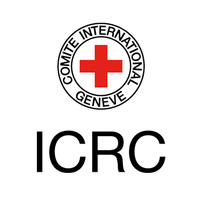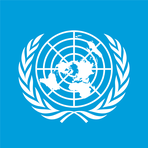The Humanitarian Crisis in Gaza: A Tenuous Balance of Aid and Conflict
June 9, 2025, 5:04 am

Location: Switzerland, Geneva
Employees: 10001+
Founded date: 1863

Location: United States, New York
Employees: 10001+
Founded date: 2002
Total raised: $500M
The Gaza Strip is a powder keg. Tensions flare, and the humanitarian situation grows dire. Aid is a lifeline, yet it is entangled in a web of military operations and political maneuvering. The Gaza Humanitarian Foundation (GHF), a US- and Israeli-backed entity, is at the center of this storm. Its operations are fraught with danger, and the stakes are high.
The GHF recently announced a halt to aid distribution. This decision came after a tragic incident where dozens of Palestinians lost their lives while seeking assistance. The Israeli military deemed the areas around GHF distribution sites as "combat zones." The irony is palpable: aid should be a sanctuary, not a battlefield.
Aid distribution in Gaza has become a chaotic affair. Crowds surge for food, and panic ensues. There are no checks, no oversight. Just desperation. The GHF has claimed to distribute millions of meals, but the reality on the ground tells a different story. The United Nations and other humanitarian organizations have distanced themselves from the GHF, citing concerns over its neutrality. They argue that the militarization of aid only exacerbates the crisis.
The situation is further complicated by the ongoing conflict between Israel and Hamas. Since the outbreak of hostilities in October 2023, the death toll has soared. Over 54,000 Palestinians have died, according to Gaza health authorities. The toll includes a staggering number of civilians. The war was ignited by a brutal attack from Hamas, which killed over 1,200 Israelis. The cycle of violence continues, with each side blaming the other for the suffering.
The GHF's operations are shrouded in mystery. Funded by opaque sources, it claims to prioritize civilian safety. Yet, the reality is grim. The Israeli military has opened fire on crowds near GHF sites, viewing them as threats. The International Committee of the Red Cross has reported mass casualties. The GHF insists these incidents occur outside its designated areas, but the lines are blurred in a war zone.
Aid is a double-edged sword. It is desperately needed, yet it can also be a weapon. The GHF's model, backed by the US and Israel, has been criticized as a "recipe for disaster." Civilians are caught in the crossfire, risking their lives for basic necessities. The UN has called for an immediate ceasefire and unrestricted humanitarian access. Yet, political maneuvering continues to hinder progress.
The US has wielded its veto power at the UN Security Council, blocking resolutions aimed at establishing a ceasefire. This has drawn ire from many quarters. Critics argue that the US is complicit in the suffering of Gazans. The Israeli government, on the other hand, views the US as a crucial ally in its fight against Hamas. The relationship is complex, marked by shared interests and conflicting narratives.
As the GHF struggles to navigate this treacherous landscape, the plight of ordinary Gazans remains dire. Food shortages loom large. The population of 2.1 million faces the specter of famine. The GHF's attempts to provide aid are overshadowed by the chaos of war. The UN has long blamed Israel for hindering aid delivery, while Israel accuses Hamas of diverting resources.
In the midst of this turmoil, a glimmer of hope emerges. Activist groups are rallying to deliver aid by sea. The Freedom Flotilla Coalition has set sail for Gaza, carrying supplies and solidarity. Yet, Israel has vowed to protect its maritime borders, raising the specter of confrontation. The sea, once a symbol of freedom, becomes another battleground.
The humanitarian crisis in Gaza is a tragic reflection of the broader conflict. Aid is a lifeline, yet it is fraught with peril. The GHF's operations highlight the complexities of delivering assistance in a war zone. Civilians are caught in a relentless cycle of violence and deprivation. The international community watches, but action remains elusive.
As the situation evolves, the need for a comprehensive solution becomes increasingly urgent. The voices of the suffering must be heard. The world cannot turn a blind eye to the plight of Gazans. The humanitarian crisis is not just a regional issue; it is a global responsibility. The time for action is now. The stakes are too high, and the cost of inaction is measured in lives lost.
In conclusion, the humanitarian crisis in Gaza is a multifaceted tragedy. The GHF's role is emblematic of the challenges faced in delivering aid amidst conflict. The international community must find a way to break the cycle of violence and ensure that aid reaches those who need it most. The road ahead is fraught with obstacles, but the pursuit of peace and humanity must prevail.
The GHF recently announced a halt to aid distribution. This decision came after a tragic incident where dozens of Palestinians lost their lives while seeking assistance. The Israeli military deemed the areas around GHF distribution sites as "combat zones." The irony is palpable: aid should be a sanctuary, not a battlefield.
Aid distribution in Gaza has become a chaotic affair. Crowds surge for food, and panic ensues. There are no checks, no oversight. Just desperation. The GHF has claimed to distribute millions of meals, but the reality on the ground tells a different story. The United Nations and other humanitarian organizations have distanced themselves from the GHF, citing concerns over its neutrality. They argue that the militarization of aid only exacerbates the crisis.
The situation is further complicated by the ongoing conflict between Israel and Hamas. Since the outbreak of hostilities in October 2023, the death toll has soared. Over 54,000 Palestinians have died, according to Gaza health authorities. The toll includes a staggering number of civilians. The war was ignited by a brutal attack from Hamas, which killed over 1,200 Israelis. The cycle of violence continues, with each side blaming the other for the suffering.
The GHF's operations are shrouded in mystery. Funded by opaque sources, it claims to prioritize civilian safety. Yet, the reality is grim. The Israeli military has opened fire on crowds near GHF sites, viewing them as threats. The International Committee of the Red Cross has reported mass casualties. The GHF insists these incidents occur outside its designated areas, but the lines are blurred in a war zone.
Aid is a double-edged sword. It is desperately needed, yet it can also be a weapon. The GHF's model, backed by the US and Israel, has been criticized as a "recipe for disaster." Civilians are caught in the crossfire, risking their lives for basic necessities. The UN has called for an immediate ceasefire and unrestricted humanitarian access. Yet, political maneuvering continues to hinder progress.
The US has wielded its veto power at the UN Security Council, blocking resolutions aimed at establishing a ceasefire. This has drawn ire from many quarters. Critics argue that the US is complicit in the suffering of Gazans. The Israeli government, on the other hand, views the US as a crucial ally in its fight against Hamas. The relationship is complex, marked by shared interests and conflicting narratives.
As the GHF struggles to navigate this treacherous landscape, the plight of ordinary Gazans remains dire. Food shortages loom large. The population of 2.1 million faces the specter of famine. The GHF's attempts to provide aid are overshadowed by the chaos of war. The UN has long blamed Israel for hindering aid delivery, while Israel accuses Hamas of diverting resources.
In the midst of this turmoil, a glimmer of hope emerges. Activist groups are rallying to deliver aid by sea. The Freedom Flotilla Coalition has set sail for Gaza, carrying supplies and solidarity. Yet, Israel has vowed to protect its maritime borders, raising the specter of confrontation. The sea, once a symbol of freedom, becomes another battleground.
The humanitarian crisis in Gaza is a tragic reflection of the broader conflict. Aid is a lifeline, yet it is fraught with peril. The GHF's operations highlight the complexities of delivering assistance in a war zone. Civilians are caught in a relentless cycle of violence and deprivation. The international community watches, but action remains elusive.
As the situation evolves, the need for a comprehensive solution becomes increasingly urgent. The voices of the suffering must be heard. The world cannot turn a blind eye to the plight of Gazans. The humanitarian crisis is not just a regional issue; it is a global responsibility. The time for action is now. The stakes are too high, and the cost of inaction is measured in lives lost.
In conclusion, the humanitarian crisis in Gaza is a multifaceted tragedy. The GHF's role is emblematic of the challenges faced in delivering aid amidst conflict. The international community must find a way to break the cycle of violence and ensure that aid reaches those who need it most. The road ahead is fraught with obstacles, but the pursuit of peace and humanity must prevail.